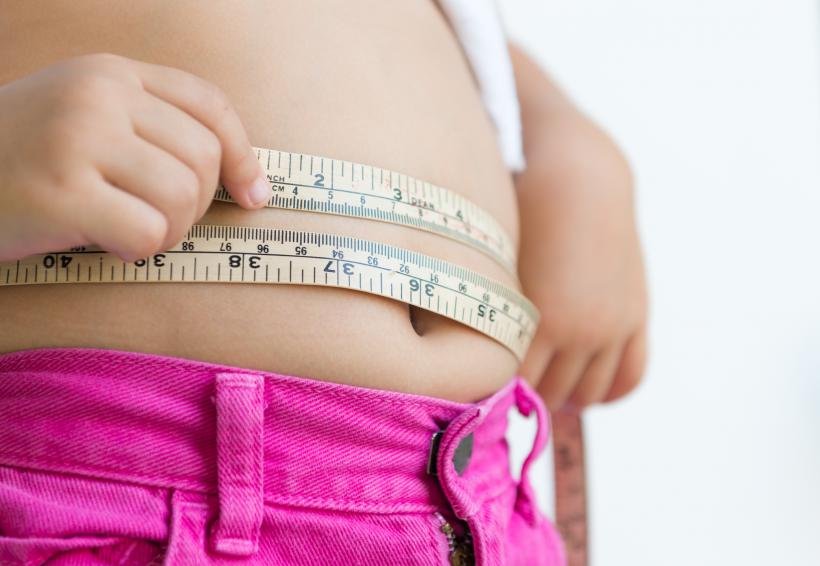
We need to talk about how the APA is Fat-Shaming Kids!
When I found out that the American Psychological Association (APA) had asked for comments on the draft of their “Clinical Practice Guideline for the Behavioral Treatment of Obesity and Overweight in Children and Adolescents” I was concerned.
The title alone indicates that they are starting from the premise that every child of a certain body size requires psychological treatment which would be laughable if it wasn’t about to harm a whole bunch of kids.
I’ll start by saying that I am a big fan of psychological treatment — I think that we have far too much stigma around mental illness and its treatment (any stigma at all being too much,) and far too few ways for people who need/want it to get treatment.
That said, these guidelines don’t appear to have anything to do with helping people who need psychological treatment. It seems to me that somebody finally told the APA how much money the fat phobia industry makes for those who claim (however dubiously) that they can make fat people thin and, despite what we’ll soon find is an astounding lack of evidence, the APA and its members want their piece of that anti-“obesity” money pie.
The report urges people providing interventions to be educated about weight stigma but fails to understand that intervening itself under these conditions is stigmatizing.
Before we get into the specific issues with these guidelines let’s talk about the glaringly obvious problem with discussions of kids and weight loss.
Kids’ weight fluctuates quite a bit because they have to, you know, grow.
Even if we accept the ridiculous premise that kids come in diverse sizes when it comes to height, foot size, nose size, and basically everything on their bodies except weight, there is no evidence that those who want to sell weight loss to kids can tell the difference between a kid whose body they think is “too big” and a kid whose body size reflects that they are about to go through a growth spurt.
What happens when you suggest diet behavior to a kid who’s about to grow a foot? How do you affect their growth? How do you affect their health? Nobody that I can find who is peddling weight loss for kids seems to know or care about this.
After slogging my way through 140 pages of guidelines I was even more concerned.
They acknowledge that there is tremendous stigma directed toward kids with larger bodies, but they are using that to back up their assertion that fat kids should get treatment to become thin. So the APA is basically suggesting that fat kids acquiesce to their bullies. As a queer woman, I see this logic and wonder if they are suggesting that queer kids who get bullied have reparative therapy to try to become straight (which, like weight loss attempts, is highly unlikely to work and can do physical and mental harm).
I was very interested in looking at their evidence grid since this is something I spend a lot of time reading and writing about and I haven’t heard of a single study that suggested that there is any method that successfully manipulates the body size of kids and adolescents, or any evidence that any such method actually makes kids healthier.
You Might Also Like: Back to School Body Shaming
In fact, research from the University of Minnesota found that: “None of the behaviors being used by adolescents (in 1999) for weight-control purposes predicted weight loss[ in 2006]… Of greater concern were the negative outcomes associated with dieting and the use of unhealthful weight-control behaviors.”
I found nothing in their evidence table to make me feel any better about any of this.
To make sure that I was correctly understanding what I read, I reached out to Deb Burgard, Ph.D, a Harvard educated eating disorders specialist, and psychologist for her analysis:
“1. The basic premise that they should recommend an intervention if there is evidence of weight change at 12 months out is a farce. It does not answer the "key question #1" of whether the interventions "produce and maintain" change.
2. The lack of data is profound — as they admit, even the studies they have lack information about which demographic groups are included.
3. The studies that show a 12-month -.26zBMI change are in children (not adolescents), which is why they urge intervention "as early as possible." But they make the recommendation for adolescents also.
4. Because BMI in children is not just height and weight but also age, there is a time component which means kids growing faster have higher BMI, and restriction of food is likely to slow their growth, which lowers their BMI whether there is a loss of fat or muscle or just a pause. No way to tell what the data are even showing.
5. The "lack of evidence" for harms is taken as evidence that there are not harms — otherwise, how can they strongly recommend intervention?
6. No one has defined residual disordered eating, anxiety about weight, frank eating disorders, avoidance of exercise after being traumatized with trying to lose weight, higher eventual weight, or weight cycling as "harms" - and they do not require data past 12 months to look for those harms. In fact they rule out studies with kids with disordered eating. No one is asking about this.
7. The report urges people providing interventions to be educated about weight stigma but fails to understand that intervening itself under these conditions is stigmatizing.
8. The Conflicts of Interest section detailing how they came up with this set of "experts" rules out people "with strong intellectual points of view" saying they would not be "objective" but rules in people who have ties to industry and pharma.
9. There is the usual racist crap about parents not knowing their kids are fat "due to cultural reasons" - being "uninformed" and needing the "objectivity" of the healthcare system.
10. There is a great line on p. 47, line 16, that the evidence pertains to kids in the 98th percentile and they don't know about kids even in the 95th percentile, let alone the 85th percentile. BUT the recommendation is for kids 85th percentile and up. Also note that the change in zBMI score of -.26 at this level means a kids is going from (at most) the 99th to the 98th percentile and this is deemed desirable and worth doing.
11. They use the usual obnoxious "person first language" and "obesity" as a condition/disease.
12. At least they say nothing else is really knowable. But neither is the recommendation.
You can see that -.26 (the supposed BMI change as a z-score) is something that is so small at the 98th percentile and up that it would not necessarily even move you out of the percentile.
This is a parallel to the bogus claim that "even 3% of weight loss can be clinically significant" which is where the "obesity experts" inevitably end up because weight loss that the average person would consider meaningful is so elusive. Clinically significant changes happen with no weight loss at all, but that would blow the whole paradigm. I would also like to point out that with such small losses, higher weight people can produce them on demand for the weigh-in, and what we are actually seeing is mild weight-cycling.
The studies with less than 26 intervention hours were even less convincing, so they are trying to make the most of the ones that have more hours, but there is no broad evidence justifying the recommendation.”
So, to summarize, an APA group that ruled out people with “strong feelings” about this topic, but accepted people with ties to industry and pharma, has recommended that families pay for 26 hours of therapy if their kid is a certain size regardless of the child’s actual mental health.
They have no reason to believe that this will make the children healthier or thinner. They have no idea what harm this intervention could do including to the health of growing children, those predisposed to disordered eating and eating disorders.
This is a travesty. Much like the Eating Disorder community, the APA is trying to turn fatphobia into a profitable business. It is professional incompetence and bias rendered to create clinical guidelines, unsupported by evidence, that will be foisted upon countless children who deserve far better.
When it comes to evidence for their recommendations, the Emperor, APA, has no clothes, and we already know how this ends. So Click here by October 27th to leave your comment for them.








